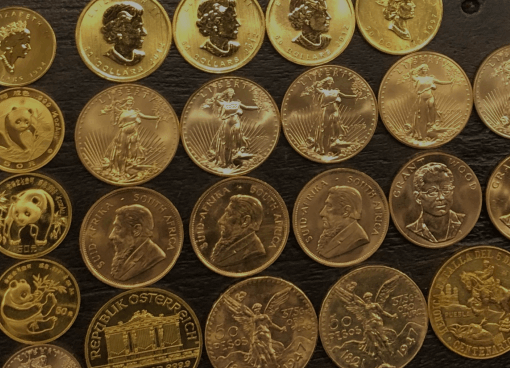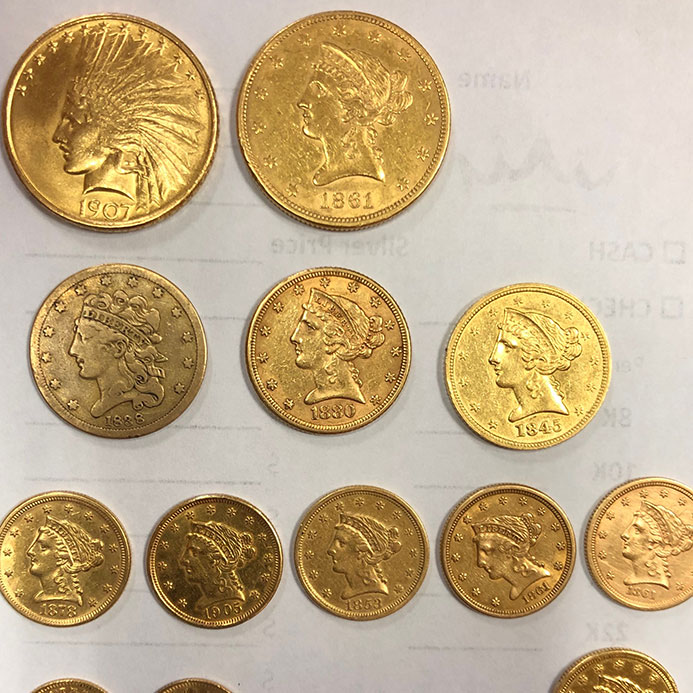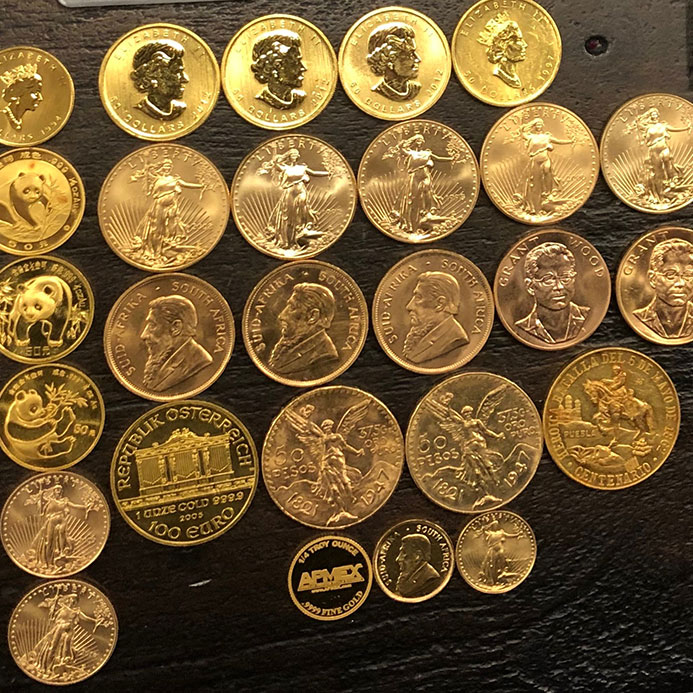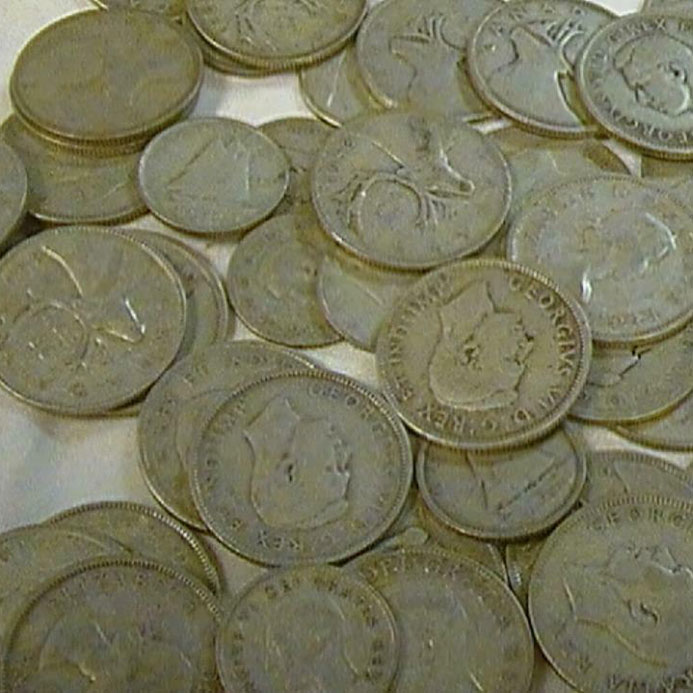Canadian Platinum Maple Leaf coin
Table of Contents
The Royal Canadian Mint released the Canadian Platinum Maple Leaf, its official bullion platinum coin for the first time in 1988. The coin was produced until 2002 and was made available in four different denominations. All contain .9995 pure platinum and are marked as such. In 2009, the bullion coin was reintroduced, partially. It was produced as a 1 troy ounce denomination with .9999 total purity. All subsequent Canadian Maple Leaf platinum coins, produced from 2009 and on are composed similarly. On its obverse, from 2009 on, is a brand new, at-that-point unreleased portrait of Queen Elizabeth II. These coins are considered legal tender by the Canadian government. Their face value is less than the market price of their material composition. This is the case with other bullion coins as well.


Composition and other information
While the platinum coins were produced from 1988 to 2002, for a time they contained .9995 pure platinum. Their actual value is based on platinum’s daily market price, but they each have their own face value. They were available in four denominations, each a different size. The denominations were as follows:
- 1 troy ounce with a face value of $50
- 1⁄2 oz with a face value of $20
- 1⁄4 oz with a face value of $10
- 1⁄10 oz. with a face value of $5

Facts about the coin
- Produced in Canada
- A face value of .50 Canadian dollars (2009 face value only)
- Coins produced from 1988 to 2002 have four different face values
- A mass of 31.110[1] g or 1.00 troy oz
- A diameter of 30[1] mm
- Its edge is serrated
- It’s composed of 99.95% Platinum (1988 to 2002)
- It was minted from 1988 to 2002 and 2009–present

History of the Canadian Maple Leaf series
In 1979, the Canadian Maple Leaf series was introduced by the Royal Canadian Mint in the form of the Canadian Gold Maple Leaf coin, containing 1 troy ounce of .999 pure gold. In 1985 that was refined to .9999 pure gold, containing no alloys. This was considered rare at that time in history, as no other gold coin was as pure. From the time it debuted it was popular on the international bullion market and even secured the title of “top sales spot.” Within that first year it was considered “the most successful gold coin” in the world. That’s why the Mint introduced silver and platinum versions of the coins in 1988. Platinum was a great choice for Canada as its productions of the precious metal were ramping up. That year Canada was ranked third for platinum production, just behind world platinum superpowers, South Africa and the former Soviet Union.
Types of U.S. Silver Coins
- Morgan Silver Dollar (1878-1921)
- Peace Silver Dollar (1921-1935)
- Walking Liberty Half Dollars (1916-1947)
- Franklin Half Dollars (1948-1963)
- Kennedy Half Dollars (1964-1970)
- Barber or Liberty Head Quarter (1892-1916)
- Standing Liberty Quarter (1916-1930)
- Washington Quarters (1932-1964)
- Jefferson War Nickels 35% silver (1942-1945)
- Barber or Liberty Head Dimes (1892-1916)
- Mercury Dimes (1916-1945)
- Roosevelt Dimes (1946-1964)
History of the Platinum Maple Leaf coin
Platinum Maple Leaf coins were first produced by special strike in September of 1988. Japan’s Junichiro Tanaka, who ran a large precious metal distribution company, was allowed to strike the first platinum coin. The coin press weighed 140 tonnes. It’s likely Tanaka was given the honor because, at the time, the Gold Maple Leaf was tremendously popular in Japan. The first striking is an honorary tradition usually given to heads of state within the country the coin is being produced by. But this honorary strike was done by a foreign national. Japanese citizens and collectors were so smitten with the coin that 1.1 million ounces of the gold coin were sold from 1984 until production stopped. That was equal to 70% of the country’s market share.
A month after the coin premiered, in December of 1988, the American Ford Motor Company made an announcement that changed everything. It would be testing materials for its new catalytic converters. Ford Motor Company’s goal was to replace platinum with a less expensive metal. The announcement caused a great deal of fear. Would the sale of platinum coins decrease because of this? The automotive industry, and Ford Motor Company, were responsible for a third of all platinum consumption at the time.
Platinum speculators were right. This announcement had a huge bearing on the price of the precious metal. Sales of the Platinum Maple Leaf were outrageously high during this period. Sales did more than double their average between 1990 and 1991. But, the good times wouldn’t last long. Platinum as a commodity was doomed because of its international standing, forcing the spot price to drop substantially. This caused platinum to be less valuable than gold for a short time in 1991 as the kinks were being ironed out. Platinum eventually fought back and earned its top spot as the king of precious metals. The price went back up because interest in platinum was up. But then prices got too high and people lost interest again. This caused the Royal Canadian Mint to reconsider its platinum coin and production came to a halt in 2002. By 2009 the coin was back in production. This time, Queen Elizabeth II’s portrait was new and improved by the time the coin made its next debute. The newest design was created by Susanna Blunt.
Customer Testimonial


Design
The coins are adorned with a portrait of England’s Queen Elizabeth II, in a design by Arnold Machin. This same portrait was used in places other than Canada, including the United Kingdom and Commonwealth of Nations. When the second iteration of the Canadian Platinum Maple Leaf coin debuted, a new design graced its obverse. This time by artist Susanna Blunt.
Can you buy Canadian Platinum Maple Leaf coins?
Yes. These coins can be bought or sold. Make sure to work with a reputable dealer who understands these coins and their value.

Choose Crown Gold Exchange to buy or sell your Canadian Platinum Maple Leaf coins
Crown Gold Exchange holds the utmost respect for you and your valuables. When you visit one of our locations, we make sure that you feel welcome, and that your property is protected. We use industry-standard equipment to ensure accurate measurement of your valuables, and we have a special process to keep your valuables safe. Our accuracy enables us to offer you top dollar, and we have several different payment methods available for your convenience, so you won’t be waiting around to get paid.
Crown Gold Exchange will purchase any kind of gold you bring us, including 8-karat, 10-karat, 14-karat, 18-karat, 21-karat, 22-karat, 24-karat, or anything else. We buy gold bars, gold bullion, gold jewelry and some gold plated items like pocket watches. If you happen to be in possession of an exclusive piece made by a top gold designer such as Cartier, Tiffany, Rolex, or Patek Philippe, we will often pay more than the weight of the item. Such special pieces often command a higher price on the secondary market due to their superior craftsmanship.
BUYING YOUR GOLD, SILVER, DIAMONDS AND COINS SINCE 2010
She explained everything to me and it made me feel very comfortable.
Sloane
Crown Gold Exchange Customer
